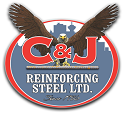By Sandford Tuey – Canada
An important matter for the designer of your foundation and structure is to have the steel rebar located in the perfect place. If you get reinforcing steel rebar placement in the wrong area it can lead to serious structural failures.
Here are some important rebar tying points to remember:
- If the top rebar skeletal framing sheet are not correctly placed from the top of the concrete or if the bottom rebar is placed too high from the bottom, even by just a half an inch from the specified depth like a 6-inch-deep slab, can reduce the load-bearing capacity enough to cause failure of your foundation structure.
- Do not place reinforcing steel on top of a layer of fresh concrete, then pour more concrete on top of that. This is an unacceptable method of rebar positioning. You have to reinforce bar supports with strategically placed steel wire at important junctures. It is recommended to use metal wire and not plastic ties. There are multiple support methods that C & J Reinforcing can help you when in the design stage that can assist you to build a safe, strong and perfect foundation, no matter how heavy your dwelling above and on your foundation, may be.
- Plastic ties and accessories are less expensive than metal ones, but the Concrete Reinforcing Steel Institute’s ‘Reinforcing Steel Resource Guide’ or the Regulations of your jurisdiction’s requirements of supports for materials and heights described where each should be used and how.
- Reinforcing steel should be secured, preventing displacement and can ensure proper tie wires in the correct places. Tie wire are wrapped in 3 or 4 lbs. coils. Wire is hanging from a worker’s belt or hang from a reel suspended from a worker’s belt for easier access. Wire of 16½ or 16-gauge black, soft, annealed wire, is the norm, but heavier reinforcement wire can require 15 or even 14 gauges to hold proper positioning of your rebar.
- Tying epoxy-coated rebar, use PVC plastic ties or even quick snap-on ties (which require no special equipment or tools), just snap them together with bare hands. This can be less expensive than metal and faster.
- Some say tying rebar does not need have ties at every intersection, but it is recommended to do so. Ties don’t contribute strength to your structure, so are necessary only when steel rebar can be displaced during concrete pouring.
- Keep the ends of the tie wires at the proper depth from the surface or where concrete can erode and cause rebar rusting.
- The exact positioning is not as critical, as long as good approved cover is utilized or the design documents specify a certain number of bars and are located where they must be.
Follow the recommend blueprint requirements and ensure you have a qualified rebar specialist place, connect and ensure your foundation will be able to withstand your dwellings load.


